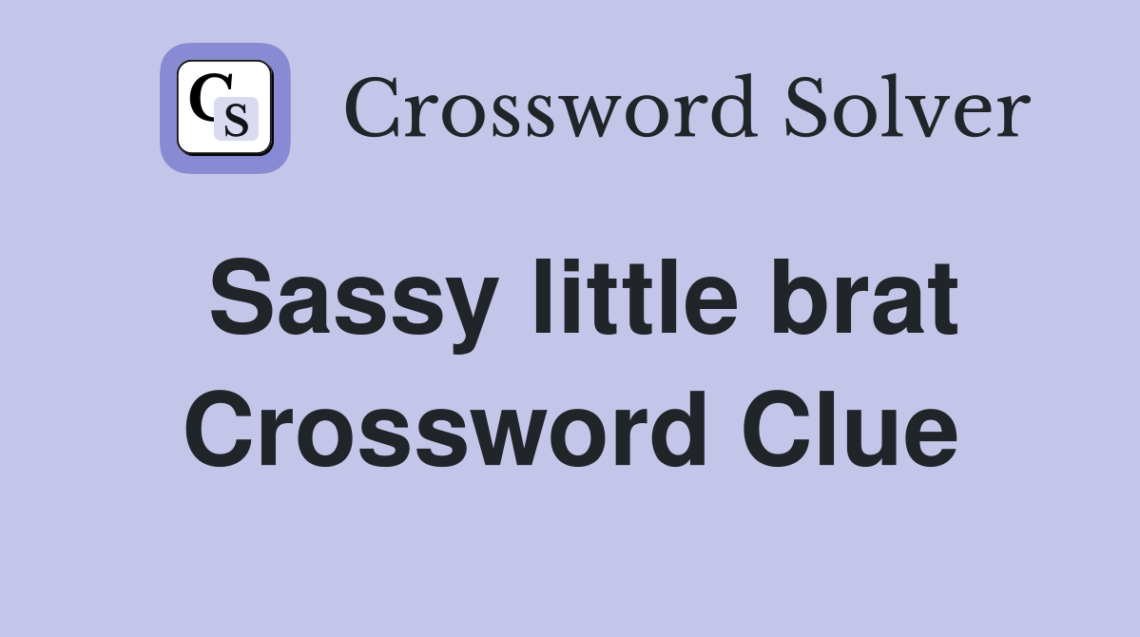Language is a fascinating tool that evolves with culture, humor, and context. One phrase that often sparks curiosity is “sassy little brat.” While it may seem straightforward, the term carries nuances that reflect both personality traits and societal perceptions.
In this article, we’ll break down the meaning of “sassy little brat,” explore how it’s used in different contexts, and discuss its connotations in everyday language.
What Does ‘Sassy Little Brat’ Mean?
To fully understand this phrase, let’s break it down:
1. Sassy
- Definition: Bold, cheeky, or confident in a playful or impudent way.
- Usage: Often used to describe someone who speaks their mind with attitude, humor, or slight disrespect.
- Example: “That kid is so sassy—she always has a witty comeback!”
2. Little
- Definition: Small in size, age, or significance.
- Usage: In this phrase, “little” emphasizes youthfulness or diminutiveness.
- Example: “He’s just a little guy, but he has a big personality!”
3. Brat
- Definition: A mischievous or spoiled child who often behaves badly.
- Usage: Usually used in a negative or playful sense to describe someone who is difficult to manage.
- Example: “Stop acting like a brat and share your toys!”
Combined Meaning
When put together, “sassy little brat” refers to a young person (often a child) who is bold, outspoken, and somewhat mischievous. The phrase can be affectionate or critical, depending on the context.
Contextual Usage of ‘Sassy Little Brat’
The meaning of “sassy little brat” depends on how it is used. Let’s explore a few different contexts:
1. Affectionate or Playful Use
In some cases, calling someone a “sassy little brat” is meant in a teasing or affectionate way. Parents, teachers, or friends might use it to describe a child with a lively personality.
💡 Example:
👩👧 Mom: “You’re such a sassy little brat!”
👧 Kid (smiling): “Well, I get it from you!”
Here, the term is used lightheartedly, celebrating a child’s boldness and humor.
2. Negative or Critical Use
At other times, the phrase can carry a negative tone, implying bad behavior or disrespect.
💡 Example:
👨🏫 Teacher: “Stop talking back to me, you sassy little brat!”
In this case, the phrase is a scolding remark, highlighting rudeness or disobedience.
3. Pop Culture and Media
The phrase “sassy little brat” is often seen in movies, TV shows, and books, describing characters with a mix of charm and trouble-making tendencies. Many child characters, especially in sitcoms, are written with sassy attitudes to add humor and personality.
💡 Examples:
- Lisa Simpson (The Simpsons) – Intelligent but often sassy.
- Kevin McCallister (Home Alone) – A mischievous yet lovable troublemaker.
- Wednesday Addams (The Addams Family) – Witty, sarcastic, and independent.
Is Being a ‘Sassy Little Brat’ a Bad Thing?
The phrase can be both positive and negative, depending on tone and intention.
✅ Positive Aspects:
- Encourages confidence and quick thinking.
- Adds humor and liveliness to interactions.
- Often associated with strong, independent personalities.
❌ Negative Aspects:
- Can come off as disrespectful or rude.
- Might indicate behavior that needs correction.
- Some people find sassiness annoying rather than charming.
The key is balance—being witty and bold is great, but being rude or overly defiant can cause problems.
How to Handle a ‘Sassy Little Brat’
If you’re dealing with a child (or adult!) who fits this description, here are some tips:
1. Encourage Respectful Communication
Teach that confidence is great, but it should be paired with kindness and respect.
💡 Example: Instead of saying, “Whatever, you don’t know anything!” try: “I see your point, but I think differently.”
2. Set Boundaries
It’s okay to have attitude, but there should be limits to backtalk and rudeness.
💡 Example: “I love your confidence, but let’s speak politely to each other.”
3. Channel Sassiness Positively
Encourage expressive kids to use their wit in debating, acting, storytelling, or leadership.
💡 Example: If a child is quick-witted, encourage them to write funny stories or participate in theater.
Final Thoughts
The phrase “sassy little brat” is often playful but can sometimes be critical. Whether used affectionately or as a reprimand, it highlights a mix of confidence, mischief, and attitude.
While sassiness can be a fun and endearing trait, it’s important to ensure it doesn’t become disrespectful. Finding the right balance between boldness and kindness is key!
Next time you hear someone call a kid (or even an adult) a “sassy little brat,” you’ll know exactly what it means—and whether it’s meant as a compliment or a warning!
Frequently Asked Questions (FAQs)
❓ Is “sassy little brat” an insult?
✔ It can be, but it depends on tone and context. Sometimes it’s playful; other times, it’s a reprimand.
❓ Can adults be called “sassy little brats”?
✔ Yes! Some adults are known for their sassy attitudes and cheeky behavior.
❓ What’s the difference between sassiness and rudeness?
✔ Sassiness is witty and playful, while rudeness is disrespectful and offensive.
❓ How do I make sure my child’s sassiness is positive?
✔ Encourage respectful communication while letting them express themselves confidently.



